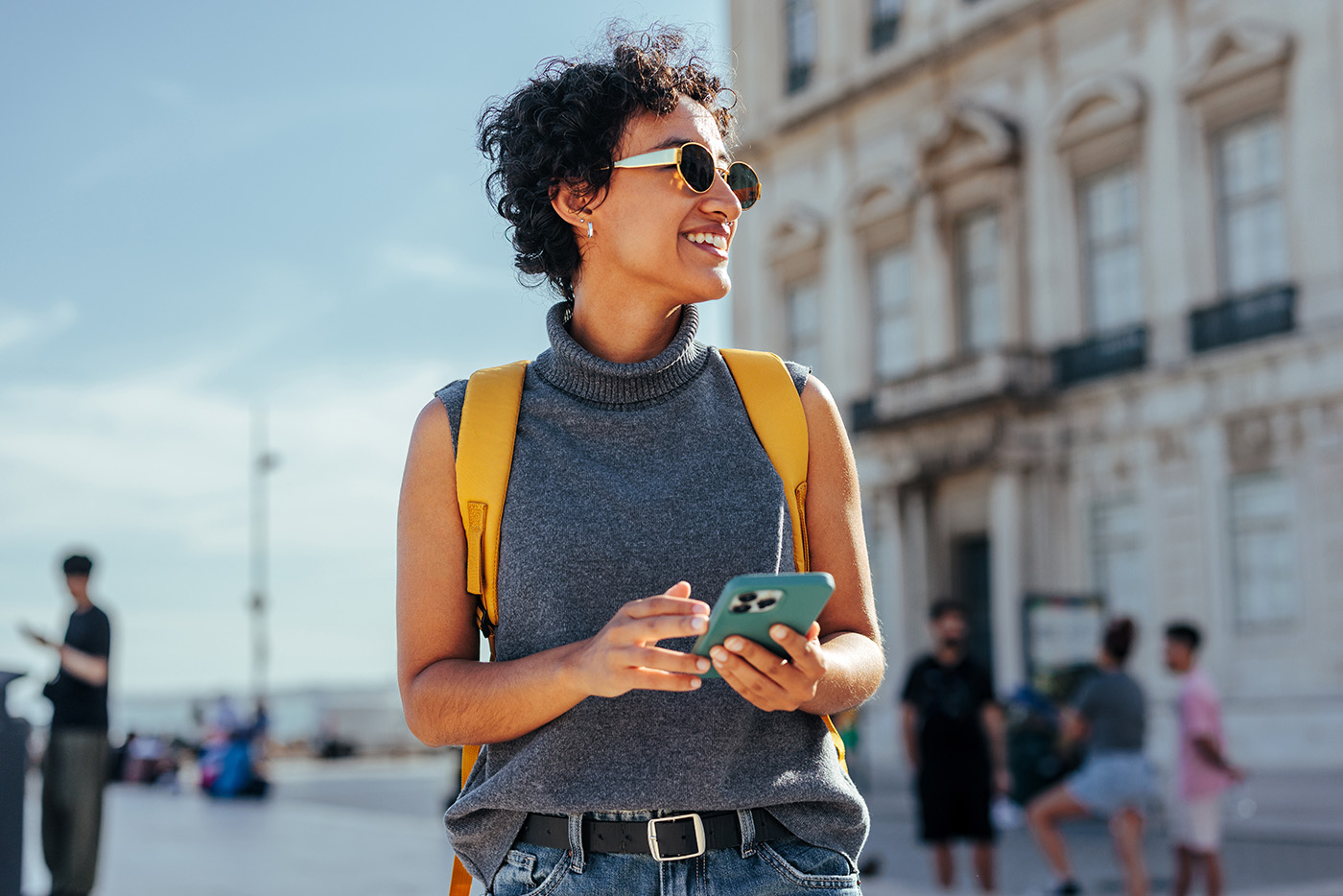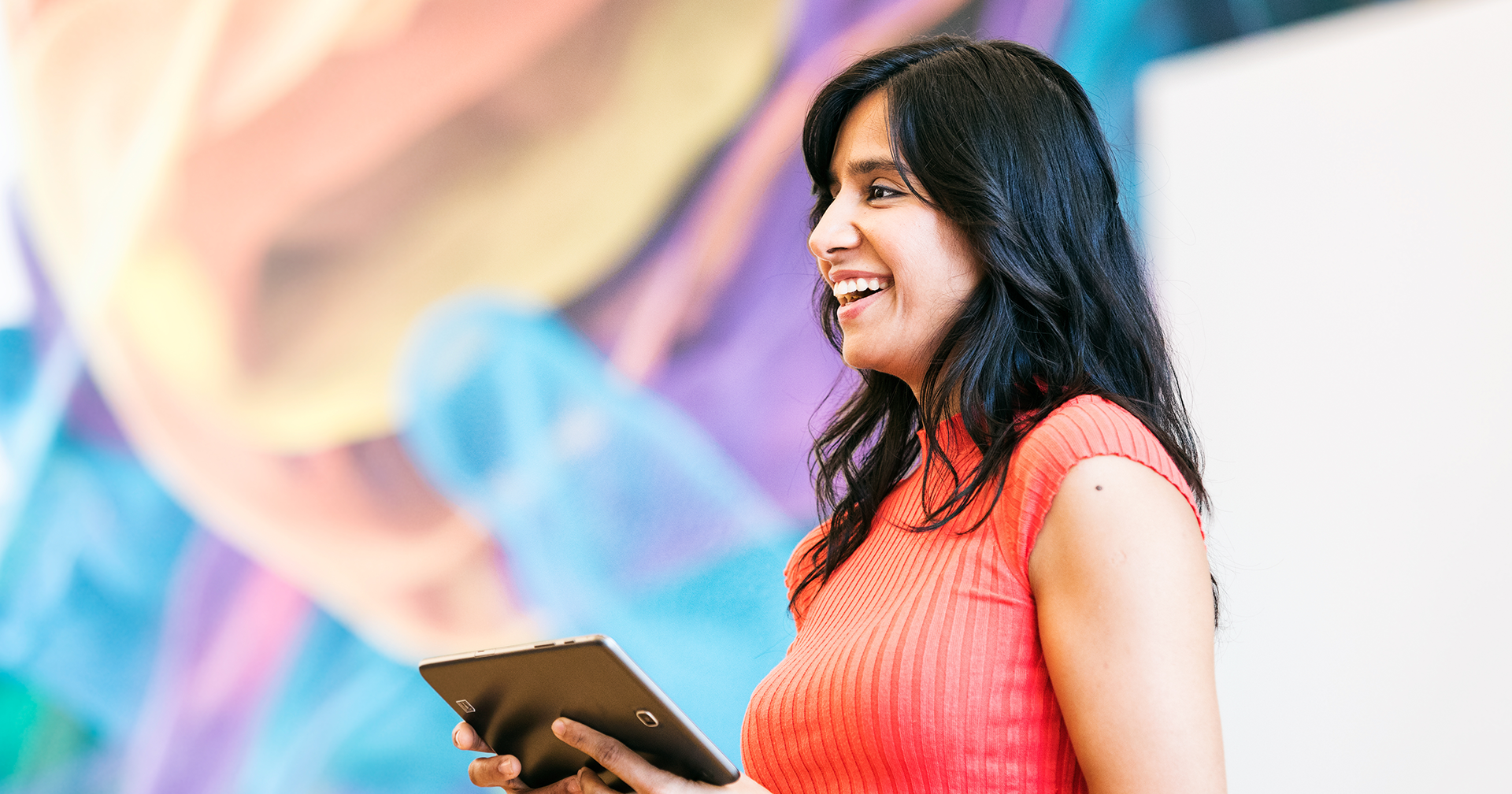Sixty Seconds for Social: Connecting With Consumers Via Messaging Apps

Posted By Mary Pavlu on January 23, 2015
For those who think Facebook, Apple and other mobile carriers control messaging, think again. More and more next-generation messaging apps are popping up and growing in popularity every day. In fact, TechCrunch recently reported that a number of top influencers predict that personal messaging apps will become, “‘the new social media' in 2015,” and based on the incredible growth in popularity among consumers and the increase in opportunities for brands, we're inclined to agree. Messaging platforms have gone from simply helping users avoid texting charges to becoming powerful social media portals that are competing with the big guns like Facebook, Twitter and Instagram. In this blog post, we'll explore several brands that have been quick to capitalize on messaging platforms and connect with consumers in a more unique, personal way, with great results.
The Basics: The Messaging App Landscape
You can't talk about the rise of personal messaging apps without mentioning Snapchat. However, the growing popularity of messaging apps extends far beyond this millennial favorite. For example, Facebook-owned WhatsApp recently reached a landmark of 700 million monthly active users, and apps like Line, Kik, Tango, and WeChat are growing in popularity as well.
With all of this rapid growth, keeping up with the names, features, and particulars of all of these apps is more than challenging. Below is a table from IPG Media Labs' recent report, “Messaging Apps: The New Face of Social Media and What It Means For Brands” that outlines the top messaging apps (minus Snapchat), with WhatsApp resting at the very top. Note that since this table's publishing in mid-2014, these apps's userbases have grown even more. For instance, WhatsApp recently surpassed 600 million users and counting.
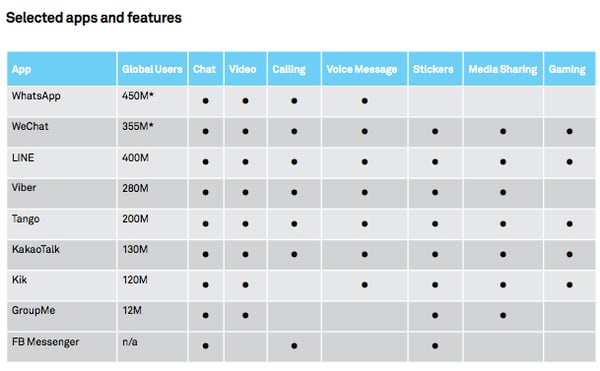
Most of these apps have a very strong presence in Asia, especially Line and Tango, which has more users there than any other country. Since Asia is usually ahead of the curve on the tech front, their usage can be seen as a prediction of the popularity it will eventually enjoy in the U.S.
Now that we've taken 60 seconds (more or less) for the rise of the social messaging app, let's look at how brands are taking advantage of this trend. The brand examples below showcase how social messaging apps like Snapchat, Line, Tango, WeChat and Kik are providing brands with even more opportunities to connect with consumers.
Brand Use of Messaging Apps
Line is a free calling and chat app from Japan with more than 500 million registered users and 170 million monthly archives. The app gives users free calls on iOS and Android along with free messaging, a translation engine and special emojis, called “stickers” that users can buy. These playful characters are what set Line apart from other messaging platforms - it may seem silly, but users go crazy for it. Line has over 500 stickers globally and is making roughly $18 million a quarter on sticker packs, according to the IPG Media Labs report.
Line offers corporate accounts for brands looking to join the messaging platform, but it doesn't come free. Brands must pay per month for the account itself, as well as sending and receiving texts. Brands can choose from various payment plans - but they aren't cheap. The Next Web reported that three months of the service could cost up to $30,085.
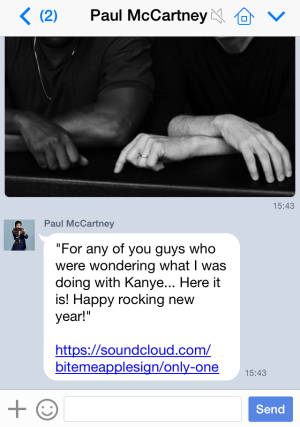
Sir Paul McCartney, who has a strong following on social media, was one of the first big names to start using Line. McCartney already has more than 10 million followers on Line. That's more than his Facebook page, Twitter, and Instagram.
This former Beatle recently used Line to promote his new song--a collaboration with Kanye West. His public post showed up on all of his 10 million Line followers' news feeds, and each of them also received an individual Line chat message. Back in 2013, Line claimed that one-third of its users accessed their news feeds each month. So it's fair to assume that at least that many viewed the post by McCartney.
Brands are constantly finding new ways to leverage this ephemeral messaging app, and Snapchat is increasing those opportunities, most recently with the rollout of “my story” ads. This month, McDonald's released one of the first ads with a 15-second animated clip promoting the burger chain's “Choose Lovin'” campaign - their new version of “I'm lovin' it.” The clip depicted Dorothy and the Wicked Witch, as well as Batman and the Joker making nice and becoming friends.
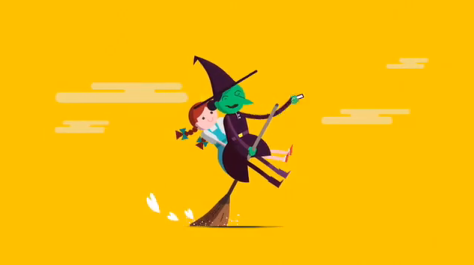
According to a study on Snapchat advertising released by Millward Brown earlier this month, all recent brand campaigns were received positively by Snapchatters. The study also found that Snapchat's first few advertising campaigns had huge impact on brand metrics like ad awareness and brand favorability.
With more than 150 million registered users, Kik is another big player in the messaging app circle. Kik prides itself on its simplicity, and aims to be “the easiest, most beautiful way to send messages, pictures, videos and sketches.” The appeal of Kik is geared towards a younger demographic who use the app for large group chats. Kik is used through WiFi, so it doesn't require users to enter their phone number or use a specific cell phone carrier. Kik recently debuted the “Hashtag” to take group chat even further. Users can send hashtag names like #CollegeAcapellaGroup, for example. When recipients click on the hashtag, they are taken to a group chatting page which allows up to 50 users.
To let brands in on the service, Kik introduced Promoted Chats at the end of 2014, which allows its users to opt-in and connect with brands in a more engaging fashion. Interested brands start official accounts to connect with users who follow them. The goal of promoted chats is to let users pick who they want to hear from and engage in personalized messaging rather than generic ads for everyone. Brand accounts can be used to provide offers, new content, promotions, or feedback to customers.
WeChat is a Chinese app that allows users to send messages and make voice and video calls for free with over 200 million users across the globe. In addition to contacting anyone in the world at no cost, you can share photos, videos, audio messages or take part in global chats. What makes WeChat different is its partnership with Chinese mobile payment provider TenPay, which allows users to make purchases within the WeChat app. The first official account to allow payments was McDonald's, which offered a discount on tea as long as users purchased it via TenPay in the app.
In addition to McDonald's, many other brands have been using WeChat to connect with Chinese consumers, such as Burberry, which allowed fans to view the company's London Fashion Week women's wear show, personalize digital versions of runway pieces and see exclusive content by texting Burberry.
Tango is another free app that also offers push talk (think Nextel), video calls, voice calls, texting, photo sharing and games. Tango's built-in games set itself apart from other messaging platforms. The idea is that users can chat while playing games, making for a more lively and engaged conversation. While the app is known for its strong service on iOS, it is mainly geared towards Android users. While teens and young adults are leading the growth of messaging apps, Tango is the one exception. According to the IPG Media Labs report, 70% of Tango's audience is 18-44.
Last summer, Tango launched media channels users can follow. The channels were designed for brands to showcase their ads to Tango users. Early media partners included Spotify, Huffington Post, AOL and TechCrunch. Since then, other brands such as Dunkin' Donuts have bought space for app-install ads inside Tango.
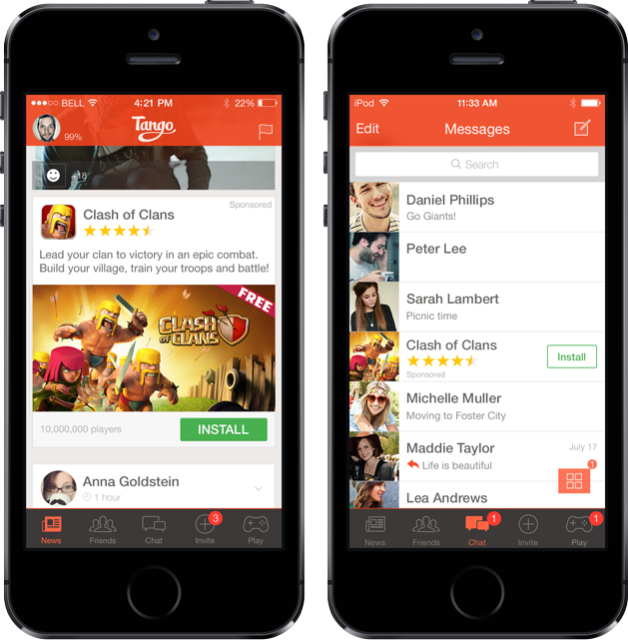
When Facebook acquired WhatsApp last February, many of us quickly acquainted ourselves with this app. For those that need a refresher, WhatsApp is a mobile messaging app that allows users to text without having to pay for SMS. WhatsApp works with all cell phone models including iPhone, Android and Blackberry - and is most popular in India.
WhatsApp has continued to make headlines, since its acquisition by Facebook. Just this week, the messaging app announced a desktop version. So far, the web app is only compatible with Google Chrome (sorry, Safari and Internet Explorer users!)
While it's not the most brand friendly of the messaging apps, many brands have found ways to connect with consumers using WhatsApp, ranging from alcohol distributors to luxury clothing brands. Absolut Unique was one of the first brands to use WhatsApp as the platform for their marketing campaign to create buzz (pardon the pun) for its exclusive launch party in Argentina. The marketing strategy was based on the creation of “Sven,” a fictional doorman for the party. Sven was to pick entry winners to attend the party, but users could only convince Sven to choose them using WhatsApp. Absolut gained a list of 600 potential customers and created great word of mouth about the launch party.
Final Thoughts
By now, you may be itching to start trying out messaging apps, and the good news is that you don't have to choose just one. According to the IPG Media Labs report, popularity of these apps don't necessarily guarantee exclusivity - the study found that users feel comfortable using many of these apps “throughout the day and in the long run.”
In addition to these platforms' many perks, such as calling, messaging and gaming, engaging with these apps can keep consumers in the know with brands' latest moves - all while keeping in touch with friends and family.
Want to learn more? Check out these resources:
- TechCrunch: Here's How Chat Apps are Becoming as Important as Social Media for Brands
- VentureBeat: Facebook Messenger Soars In Usage at Expense of Facebook's Core App
- TechCrunch: Kik Introduces Promoted Chat to Let Brands In On Its Messaging App and Finally Make Money
- DigiDay: Why Advertisers are Intrigued by Anonymity Apps
- AdAge: How Big Advertisers Are Using Next-Gen Messaging Apps Snapchat, Kik, Tango, Line and WeChat
- IPG Lab: Messaging Apps: The New Face of Social Media and What It Means For Brands
- DigiDay: The Best Brand Advertisers on Snapchat, So Far
- Upward Labs: Is WhatsApp the Next Horizon For Brands?
- Business Insider: Tango's Latest App Will Become Your New Favorite Way to Chat on Your Smartphone
- TechCrunch: WhatsApp Comes To The Desktop
- TechCrunch: Meet Line, The Messaging App That Reaches About One-Third of Japan's Mobile Phone Users
Image Credits:
- McDonald's Dorothy and the Wicked Witch from Digiday: The best brand advertising on Snapchat, so far
- Paul McCartney photo from TechCrunch: Here's How Chat Apps Are Becoming As Important As Social Media For Brands
- Tango photo from The Next Web: Don't Expect Another Major Messaging App Acquisition Anytime Soon

